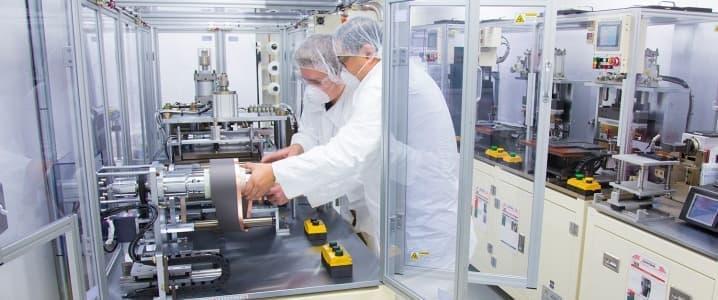Is This The End Of The Lithium-Ion Battery?
Authored by Tsvetana Paraskova via OilPrice.com,
Researchers have been in a race to find ways to improve lithium-ion batteries. They are also looking to develop alternatives to the lithium-ion battery that would be lower cost and more sustainable to manufacture. And they may just have found one.
Aluminum-based batteries would be cheaper to make, because aluminum is the third most abundant element in the Earth’s crust after oxygen and silicon. Aluminum is also light-weight and could be ideal for use in batteries.
Yet, for years scientists have stumbled in the research about aluminum batteries because they have yet to crack the code of what materials to use for the anode and cathode of the battery so that it could enable efficient energy storage with enough energy content.
Now scientists from Sweden and Slovenia say they have found a way to have efficient aluminum batteries with lower environmental impact and lower production costs.
Researchers from Sweden’s Chalmers University of Technology and the National Institute of Chemistry in Slovenia came up with a new concept for an aluminum battery design that promises twice the energy density compared to previous aluminum battery versions.
Compared to the lithium-ion batteries today, the new concept could lead to “markedly lower production costs” of aluminum batteries, the scientists say.
Another advantage is that there already exists an established industry for aluminum manufacturing and recycling. With lithium-ion batteries, recycling is one major issue as few economically feasible technologies for battery recycling currently exist.
The Swedish and Slovenian researchers have come up with a new concept to design aluminum batteries that theoretically overcomes previous challenges with low energy density in today’s aluminum batteries.
The new concept, described in an article in the journal Energy Storage Materials, upends the previous designs of the aluminum battery. So far, designs have used the aluminum as the negative electrode—the anode, while the positive electrode—the cathode—was made of graphite. But graphite doesn’t have enough energy content to be useful in a battery cell.
In the new concept, however, the researchers replaced graphite with an organic, nano-structured cathode made of the carbon-based molecule anthraquinone. This organic material in the cathode enables storage of positive charge-carriers from the electrolyte—the solution in which ions move between the electrodes—which enables higher energy density in the battery.
“Because the new cathode material makes it possible to use a more appropriate charge-carrier, the batteries can make better usage of aluminum’s potential,” Chalmers researcher Niklas Lindahl said in a statement.
“The material costs and environmental impacts that we envisage from our new concept are much lower than what we see today, making them feasible for large scale usage, such as solar cell parks, or storage of wind energy, for example,” Patrik Johansson, Professor at the Department of Physics at Chalmers, notes.
There are currently no commercially available aluminum batteries, but now the question scientists are asking is whether they can one day replace lithium-ion batteries.
“Of course, we hope that they can. But above all, they can be complementary, ensuring that lithium-ion batteries are only used where strictly necessary,” Johansson says.
According to the scientist, the team still has much work to do with the electrolyte and charging mechanisms, but they believe that aluminum is generally “a significantly better charge carrier than lithium, since it is multivalent – which means every ion ‘compensates’ for several electrons.”
“Furthermore, the batteries have the potential to be significantly less environmentally harmful,” Johansson added.
The Swedish-Slovenian team of scientists is not the only one working on aluminum battery breakthroughs. A team at UNSW Sydney said last December that they had found a new way to design rechargeable aluminum batteries by using a large organic chemical compound as the part of the battery that stores energy, which was a fundamental challenge before that.
“Developing batteries using aluminum has received a lot of expectation for delivering high energy to price ratios,” Dr Dong Jun Kim of UNSW’s School of Chemistry said.
Tyler Durden
Wed, 10/02/2019 – 14:44
via ZeroHedge News https://ift.tt/2nTuolH Tyler Durden
